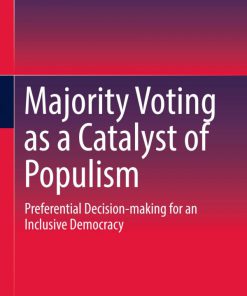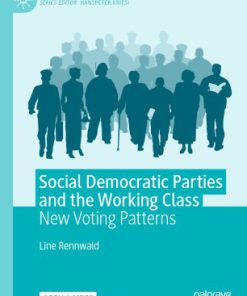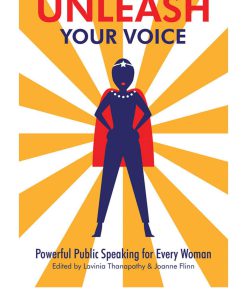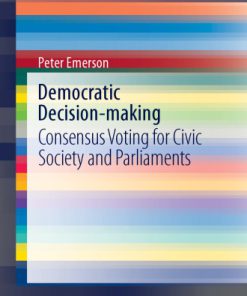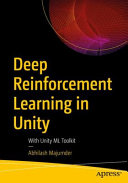Voting Unity of National Parties in Bicameral EU Decision Making Speaking with One Voice 1st Edition by Monika Mühlböck 9783319394640 3319394649
$50.00 Original price was: $50.00.$25.00Current price is: $25.00.
Voting Unity of National Parties in Bicameral EU Decision Making Speaking with One Voice 1st Edition by Monika Mühlböck – Ebook PDF Instant Download/Delivery:3319394649,9783319394640
Full download Voting Unity of National Parties in Bicameral EU Decision Making Speaking with One Voice 1st Edition after payment
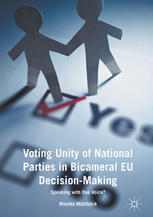
Product details:
ISBN 10:3319394649
ISBN 13:9783319394640
Author:Monika Mühlböck
This book provides a detailed study into whether Ministers in the Council vote the same way as Members of the European Parliament if they are from the same national party. The author explores the voting behavior of national representatives at the EU level, and this analysis is combined with insights from interviews with practitioners to shed light on the influence of national parties in the legislative process of the EU. This influence is found to be limited, as ministers in the Council and Members of the European Parliament submit to the constraints in their respective institutions rather than strictly voting along party lines. The study enhances our knowledge not only with regard to the role of national parties at the EU level, but also concerning the inter- and intra-institutional decision-making processes in the European Union. This book will particularly be of use to scholars and upper-level students interested in EU studies, legislative behaviour, and party politics.
Voting Unity of National Parties in Bicameral EU Decision Making Speaking with One Voice 1st Table of contents:
Chapter 1: Introduction
1.1 Motivation: The Roles National Parties Might Play in Bicameral EU Decision-Making
1.2 Research Questions: One Voice or Forked Tongue?
Overarching Research Question: Which factors lead to united or divergent voting behavior of minister
1.3 A Framework for Analysis: Of Principals, Agents, and Constraints
1.4 The Research Plan: A Mixed-Methods Approach
1.5 Compiling a New Dataset: Voting in Bicameral Decision-Making
1.6 A Look Behind the Scenes: Qualitative Interviews
1.7 Overview of the Book
Notes
Bibliography
Chapter 2: Voting in EU Decision-Making
2.1 The EU’s Bicameral Legislative System
2.2 Voting in the European Parliament
2.3 A Bias in European Parliament Roll-Call Votes?
2.4 “Voting” in the Council
2.5 Different Datasets on and Definitions of Council Voting
2.6 A Bias in Council Data?
Notes
Bibliography
Chapter 3: The Influence of National Parties
3.1 Potential Control Mechanisms
3.2 Control Over MEPs
Candidate Selection
Prior Instructions and Reporting Requirements
General Assessment of Party Control Over MEPs
3.3 Control Over Ministers in the Council
Prior Instructions and Reporting Requirements
Government Type
The Influence of National Parliaments on EU Decision-Making
General Assessment of Party Control Over Ministers in the Council
3.4 Coordination Between Ministers and MEPs
Contacts Between Ministers and MEPs
The Permanent Representations as Coordinators Between the Council and EP
Coordination of Voting Behavior Between Ministers and MEPs
General Assessment of Coordination Between Ministers and MEPs
3.5 Summary
Notes
Bibliography
Chapter 4: The Influence of Institutional Constraints
4.1 The Main Constraint in the EP: Transnational Groups
4.2 Voting Cohesion of Transnational Groups
4.3 Defection from the Transnational Group
4.4 The Main Constraint in the Council: The “Culture of Consensus”
4.5 Consensual Voting in the Council
4.6 Defection from the Consensus
4.7 Summary
Notes
Bibliography
Chapter 5: Voting Unity Between Ministers and Members of the European Parliament
5.1 Theorizing Voting Unity
5.2 How Often Do Ministers and MEPs of the Same Party Vote the Same Way?
5.3 Factors that Might Influence Voting Unity
The Incentive to Display Cohesion
Party Control Over Ministers and MEPs
Direct Coordination Between Ministers and MEPs
Party-Internal Dissent
Divergent Institutional Constraints
Overview Over Hypotheses and Indicators
5.4 Variables
Voting Unity
Incentive to Display Cohesion
Party Control Over Ministers and MEPs
Direct Coordination Between Ministers and MEPs
Party-Internal Dissent
Divergent Institutional Constraints
Control Variables
5.5 Explaining Voting Unity
Summary
Notes
Bibliography
Chapter 6: National Parties versus Institutional Constraints
6.1 The Cases for Analysis
6.2 What Happens If MEPs Have to Decide Between Their Minister and Their EPG?
Recapitulating Theory and Previous Findings
Different Options for MEPs
6.3 Can Parties Enhance Voting Unity in These Cases?
Control and Media Attention
Analysis
What Happens If Ministers Have to Decide Between Their MEPs and the Council Consensus?
Summary
Notes
Bibliography
Chapter 7: Conclusion
7.1 Answers to the Research Questions
Voting Unity of National Parties in Bicameral EU Decision-Making
How National Parties Try to Influence Voting Behavior in Council and EP
The “Institutional Constraints” That Shape the Voting Behavior of Ministers and MEPs
The Frequency of Voting Unity Between Ministers and MEPs
Factors That Influence Voting Unity
The Ability of National Parties to Ensure Voting Unity
7.2 The Main Findings: “Voting Unity” in a Nutshell
7.3 Explaining the Findings Concerning Voting Unity
7.4 Theorizing the Role of National Parties in Bicameral EU Decision-Making
The Influence of National Parties
Bicameralism in the EU
7.5 Summary of the Project and Avenues for Future Research
People also search for Voting Unity of National Parties in Bicameral EU Decision Making Speaking with One Voice 1st:
national unity meaning
what does unity mean on a ballot
national unity examples
constitutional principle of citizens united v fec
national voting rights act of 1993
Tags:
Monika Mühlböck,Voting,National,Decision,Speaking
You may also like…
Business & Economics
Mathematics - Applied Mathematics
Mathematical Models For Decision Making With Multiple Perspectives 1st Edition Gomes
Politics & Philosophy
Social Democratic Parties and the Working Class: New Voting Patterns Line Rennwald
Relationships & Lifestyle - Psychological Self-Help
Computers - Programming
Deep Reinforcement Learning in Unity With Unity ML Toolkit 1st Edition Abhilash Majumder
Business & Economics - Management & Leadership
Managerial Accounting: The Cornerstone of Business Decision-Making 7th Edition Maryanne M. Mowen
Politics & Philosophy
Democratic Decision Making Consensus Voting For Civic Society And Parliaments Peter Emerson
Computers - Programming




